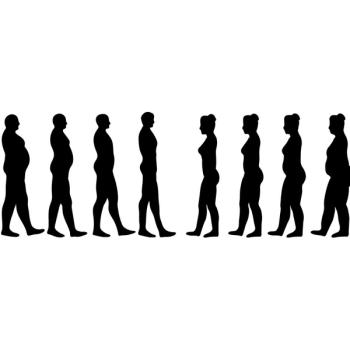
The AIDS Reader
- The AIDS Reader Vol 19 No 5
- Volume 19
- Issue 5
Keloid After Herpes Zoster in an HIV-Infected Person
It results from reactivation of latent varicella-zoster virus (VZV) within the
Herpes zoster, or shingles, is characterized by unilateral radicular pain and a vesicular rash that is generally limited to a single dermatome. It results from reactivation of latent varicella-zoster virus (VZV) within the sensory ganglia. The incidence and severity of herpes zoster increase with advancing age1; more than half of all persons in whom herpes zoster develops are older than 60 years. Zoster occurs with higher frequency in HIV-infected persons, and it may occur at any stage of HIV infection.2
A 65-year-old black Hispanic man whose HIV infection had been diagnosed 1 year ago but had never been treated, presented to the clinic with rash and moderate pain in the right side of his chest of several days’ duration. The rash had been preceded by discomfort. His CD4+ cell count was 343/µL, and his HIV RNA level was 23,500 copies/mL.
On examination, the patient had an erythematous, maculopapular, vesicular rash in the T8 dermatome distribution of the right side of his chest. A diagnosis of shingles was made on the basis of the typical presentation, and it was later confirmed by a culture of a sample taken from one of the blisters. He received treatment with oral acyclovir 800 mg 5 times a day for 7 days. One week later, there were no new lesions, and a keloid scar started to develop. The pain, however, continued with the same intensity.
Figure 1.Development of a keloid scar after an episode of herpes zoster in an HIV-infected person.
Two months later, when the lesion had healed completely (
Figure 2. A keloid with a linear distribution along the affected dermatome in an HIV-infected person.
Typical zoster lesions are clinically recognizable, with pain and vesicles limited to an easily identifiable dermatome. The presentation is subtler when few lesions occur, sparse lesions are covered by hair, vesicles have not yet erupted, or existing lesions are grouped close to the midline so that the dermatomal pattern is less evident. Diagnostic clues include the presence of lesions, sensory symptoms that do not cross the midline, and pain or sensory signs. In HIV-infected patients, the lesions might get worse after the initiation of antiretroviral therapy because of the development of immune reconstitution inflammatory syndrome.3
Systemic antiviral therapy is strongly recommended for all HIV-infected patients and some immunocompetent patients (eg, those older than 50 years or who have moderate to severe pain, moderate to severe rash, or nontruncal involvement). Acyclovir, licensed in the United States in 1982, has been the antiviral therapy of choice, but famciclovir, another oral antiviral agent, is also effective.
Both the incidence and the duration of postherpetic neuralgia are directly correlated with increasing age. Postherpetic neuralgia can be severe and incapacitating.4 Several types of treatment are available, but no results of comparative trials have been published to assist in selection of therapy. Fortunately, most patients with postherpetic neuralgia have gradual improvement in symptoms with time.5 Nonnarcotic analgesics are occasionally effective, but many patients require narcotic medication for pain relief.
Other modalities of treatment include anticonvulsant agents (eg, phenytoin and carbamazepine), tricyclic antidepressants (eg, amitriptyline and desipramine), phenothiazines, cimetidine, topical capsaicin, nerve blocks, subcutaneous local anesthetic, and electrical nerve stimulation.6 A herpes zoster vaccine was approved by the FDA in 2006 for use in persons 60 years and older, but it is contraindicated in persons with HIV/AIDS because it is a live-attenuated (high-dose) VZV.7
References:
References1. Gnann JW Jr, Whitley RJ. Clinical practice. Herpes zoster. N Engl J Med. 2002;347:340-346.
2. Buchbinder SP, Katz MH, Hessol NA, et al. Herpes zoster and human immunodeficiency virus infection. J Infect Dis. 1992;166:1153-1156.
3. Feller L, Wood NH, Lemmer J. Herpes zoster infection as an immune reconstitution inflammatory syndrome in HIV-seropositive subjects: a review. Oral Surg Oral Med Oral Pathol Oral Radiol Endod. 2007;104:455-460.
4. Baron R, Wasner G. Prevention and treatment of postherpetic neuralgia. Lancet. 2006;367:186-188.
5. Kost RG, Straus SE. Postherpetic neuralgia-pathogenesis, treatment, and prevention. N Engl J Med. 1996;335:32-42.
6. Tyring SK. Management of herpes zoster and postherpetic neuralgia. J Am Acad Dermatol. 2007;57(6 suppl):S136-S142.
7. Spach DH. Immunization for HIV-infected adults: indications, timing, and response. Top HIV Med. 2006;14:154-158.
Articles in this issue
over 16 years ago
A Tale of Two Citiesover 16 years ago
Expanding HIV Testing: Overcoming Physician Barriersover 16 years ago
Ryan White: An Unintentional Home BuilderNewsletter
Enhance your clinical practice with the Patient Care newsletter, offering the latest evidence-based guidelines, diagnostic insights, and treatment strategies for primary care physicians.





















































































































































































































































































